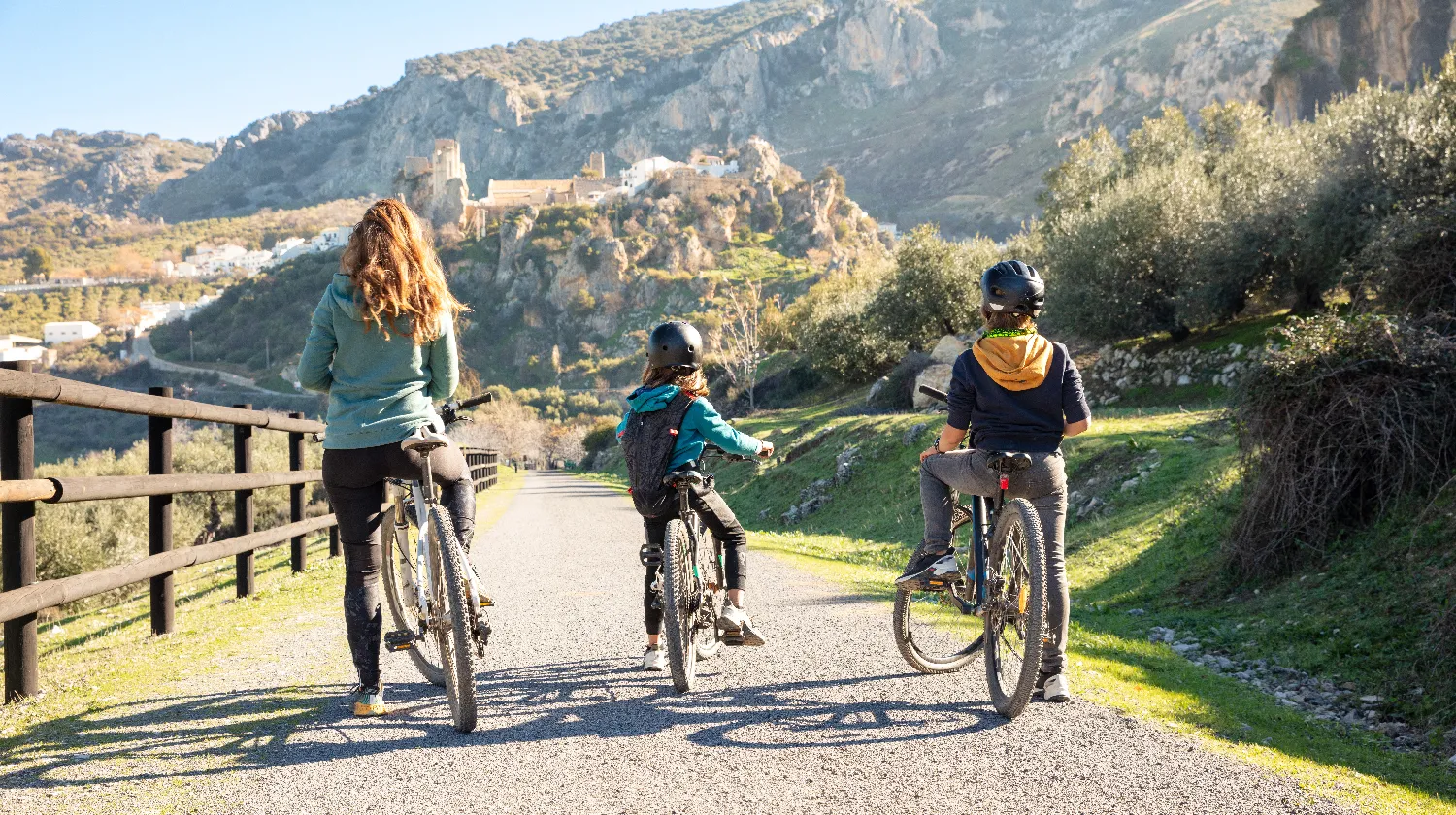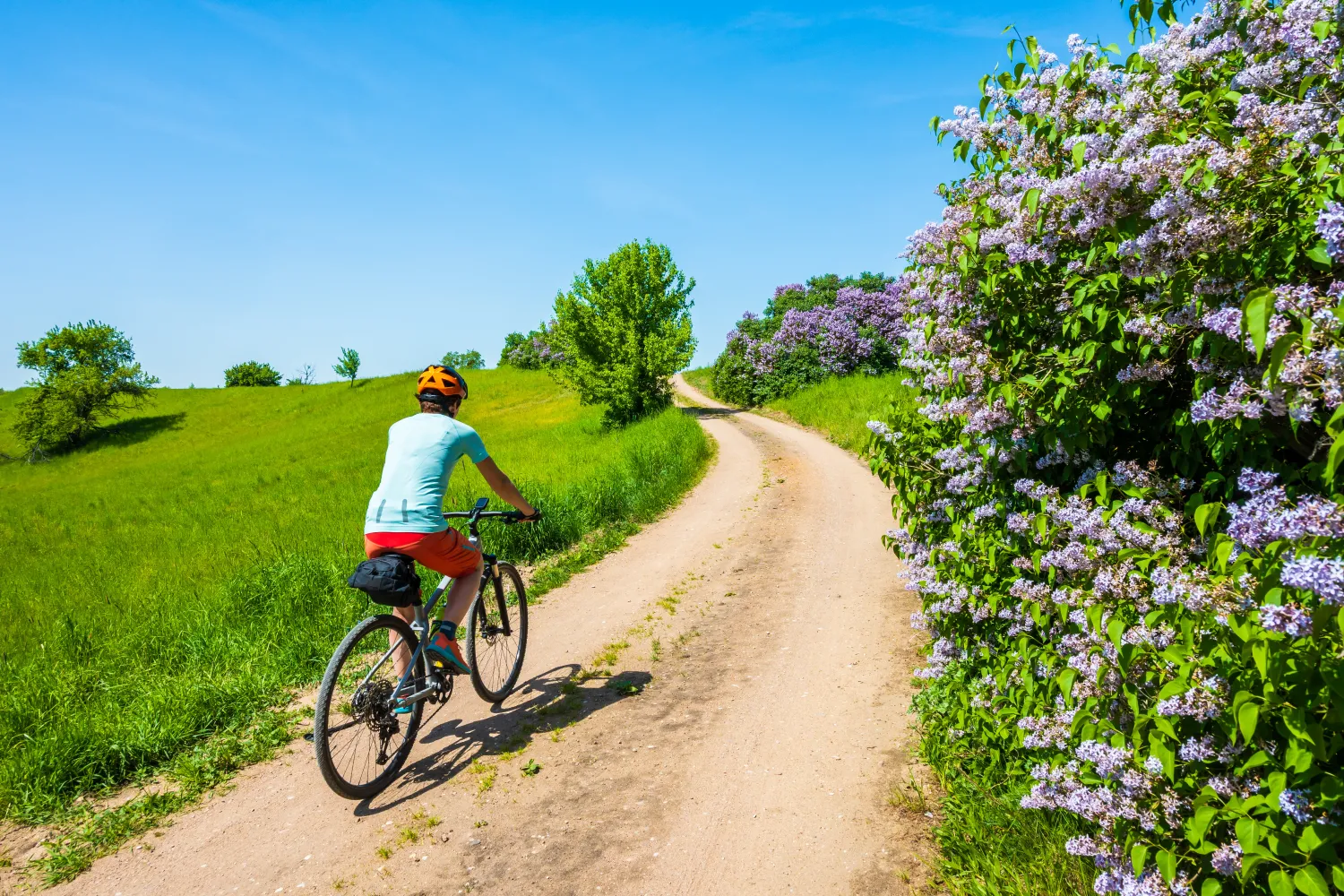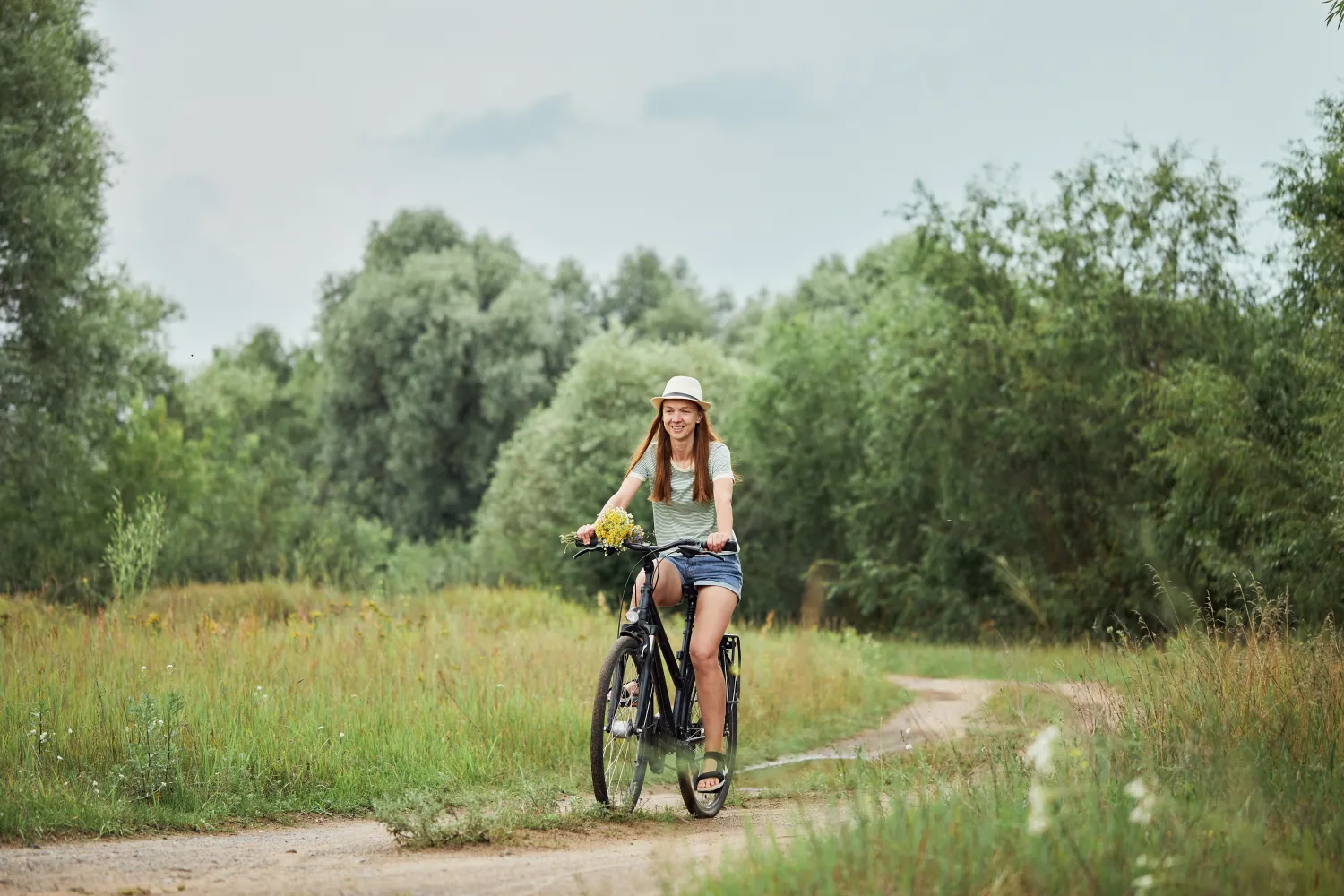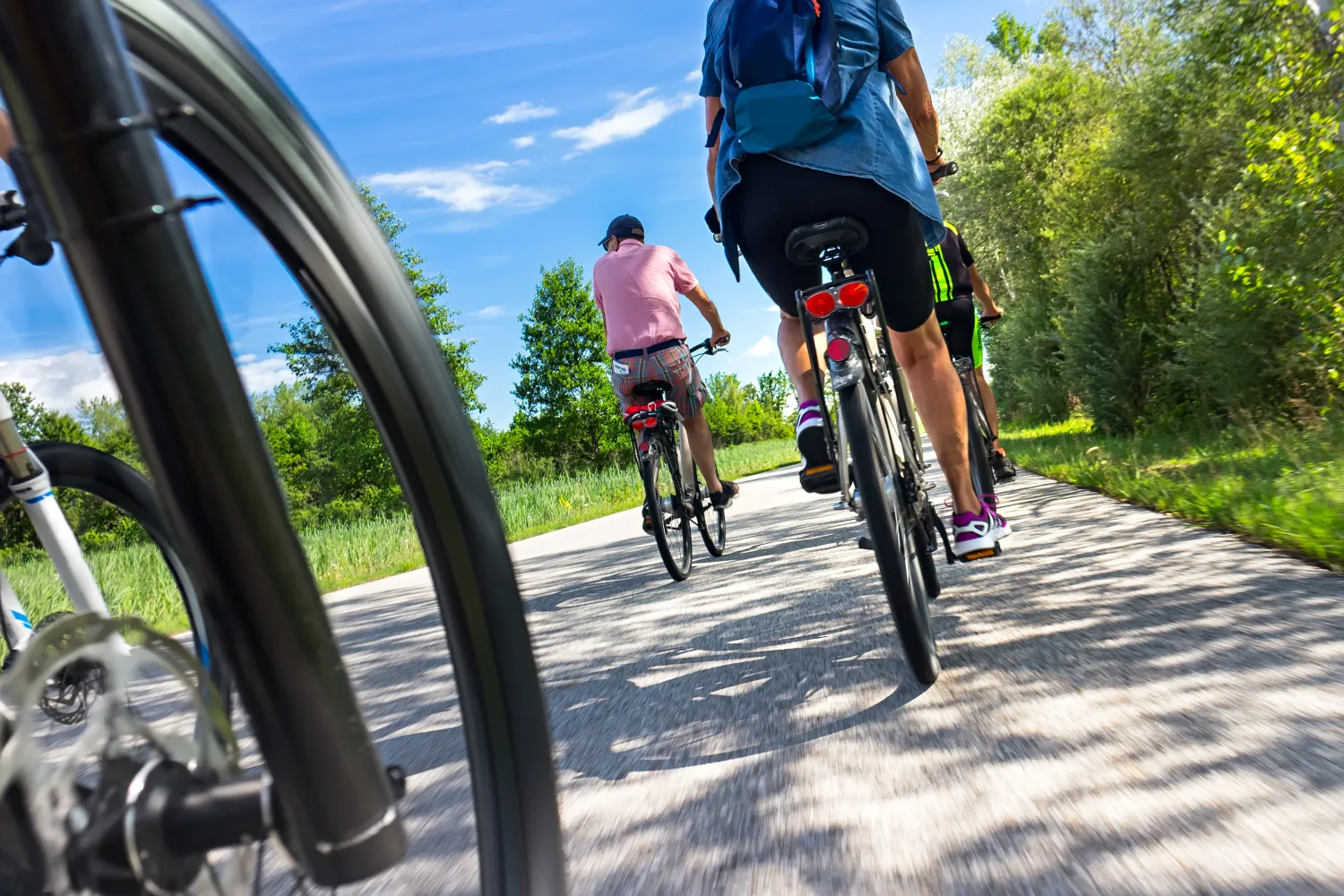A safe cycling trip for the whole family
In these confined times, the call of nature and fresh air has never been stronger. To spend a fulfilling moment outdoors with your family, there’s nothing better than cycling. In France, it couldn’t be easier with our many greenways, cycle routes and cycle paths. But before you get started, it’s essential to learn how to get your children off on the right foot (or pedal) for serene rides on roads and trails.
The right equipment for your cycling outings
There’s no need to buy an overpriced or sophisticated bike, even though it’s obvious that the better the quality of your equipment, the easier it will be to ride. If you already own your bike and haven’t used it for a while, we recommend that you have a basic technical inspection carried out by a professional near you. When it comes to children, the right equipment is the bike that will give them the most confidence. Size is a crucial factor. Avoid the temptation to buy a bike on which the child will “grow up”, as a bike that is too big can be frightening and difficult to control. For younger children, parents can choose between a bike trailer or a child bike seat. This is, of course, a choice for each individual child and parent, with both solutions having advantages and disadvantages. It’s worth noting that a baby bike seat alters the bike’s maneuverability, and that a sturdier stand will be needed to compensate for the extra weight. Is a helmet necessary? Yes, helmets are mandatory for children under 12. It must be fastened securely, comply with regulations on personal protective equipment and bear the CE mark. As parents or adults, we can only advise you to wear it when out and about. Not only does it protect you from head injuries, but it’s also a good opportunity to “set an example” for your children.
Make a game of your children’s first training sessions
Start in a parking lot. Empty parking lots are perfect places to hone your skills. You can use the existing lines to perfect quick stops and tight turns, or even draw your own obstacle course in chalk, adding your children’s favorite destinations (game stores, candy stores…) to familiarize them with the rules of the road. Trails and bike paths can sometimes be crowded, forcing you off the main road = onto the grass. It’s important to teach novices to ride on different surfaces, such as grass and gravel. The resulting self-confidence means you’ll feel at ease and enjoy every part of your bike trip. We advise you to go to the nearest park or garden and set yourself small goals and challenges. We suggest you start with outings of just 15 minutes, until you have a realistic idea of your family’s fitness and stamina. Let the slower one set the pace, and make the outing an opportunity to progress while having fun.
Plan your family cycling vacation
Knowing what you’ll do in an emergency and how you’ll communicate on your bikes is essential to riding with peace of mind. Before you set off, make sure you’ve covered the following points:
- Set up appropriate communications
Depending on the age of the children, the use of “right” and “left” may not be appropriate, even though it’s a good idea to warn other road users. To overcome this, you can color-code the brake controls with adhesive tape. “Turn right” would become “turn on the green side”, for example. Your child also needs to know how to warn walkers he’s about to overtake or cross. Doorbells are fun and popular with toddlers, but they can also be distracting for younger children.
- Define everyone’s place in your bike tour
The best side is the one where you feel most comfortable. However, as professionals, we advise you to ride behind and slightly to the left of the child/children. This will allow you to see the road ahead, but also to “buffer” the traffic coming from behind. With older children, it may be acceptable to let them lead, but before you leave home, you need to set the rules about how far they can drive ahead of you before waiting for you.
- Meticulously plan the routes of your cycling trip
Cycling when you’re scared isn’t much fun, so choosing a place where you feel safe is crucial. Analyze your children’s technique and choose routes accordingly. You can also get them involved in designing the route. They’ll be all the more serious and involved. Don’t forget to take the gradient into account. If you have any doubts, there are many applications such as Google Maps that can show you the topography of your route and enable you to bypass a hill, for example. We also recommend that you walk your chosen route at least once before bringing the children along. This will enable you to spot any potentially dangerous points and put in place an action plan (which may even involve deleting the stage if you consider it too accident-prone). Of course, the choice of itineraries is essential to make your family cycling trip a pleasant one. Evazio’s contacts can of course help you put together a tailor-made itinerary, or help you choose the perfect bike trip for your family.
- Be prepared and equipped for a hike or a bike ride
A first-aid kit is essential when you’re out cycling. It should contain essentials such as bandages, disinfectant and alcohol wipes. If your child suffers from allergies or asthma, bring extra antihistamines and anti-inflammatories. Snacks and bottled water are also essential. Calming and motivating a hungry child is no easy task. They also dehydrate faster than we do, so it’s important, even vital, to pay attention. Finally, some sunscreen and a warm or change of clothes, and you’re ready to pedal with your family!




